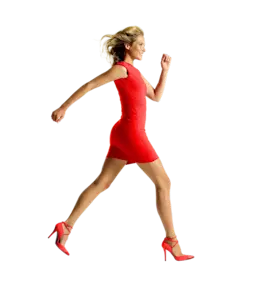Uitgelicht in deze blog
What to Consider When Choosing an Apparel ERP System
What to Consider When Choosing an Apparel ERP System
23 Sep 2022
Aptean Staff Writer
You are the successful owner of an apparel company, but maybe you’ve never used an enterprise resource planning (ERP) solution. Or, perhaps you’re using a legacy solution that no longer meets the needs of your company. You’re facing some stiff competition, and you must manage every aspect of your business from design to manufacturing.
Add in supply chain issues and seasonal volatility, and you don’t have enough time in the day to keep up with your business. You know that you need to do something to gain an advantage.
Enter Aptean Apparel ERP.
An industry-specific apparel ERP system streamlines key tasks and processes involved in running a successful fashion and apparel company making you more efficient, effective and even agile which leads to faster growth and profitability.
There are a lot of options out there when choosing a crucial piece of software like an ERP, and much to consider in this important decision. Some out of the box ERP vendors promise to increase your profits or create more efficient processes. Nonetheless, if they aren’t designed for the apparel industry, they won’t have the functionality you need to succeed; and they might even hinder your growth.
To determine whether an apparel ERP is right for you, there are some simple criteria. In the article below, we’ll examine what those are and how to make the right decision for your fashion and apparel company.
1. Look for an Apparel ERP Purpose-Built for the Industry
If you’re in apparel and footwear, an ERP made for other industries won’t work well for you. And, you need to avoid generic ERP software—as anyone in the fashion industry knows, one size does not fit all. Generic ERP solutions won’t have the features and functions you need to thrive in the fashion industry.
When you are choosing an ERP system for your apparel business, you need specialized features that enhance your operations and allow you to keep up with fashion’s fast-moving marketplace. You need to be able to access your data from anywhere; and you need full visibility into your operations. Buying an ERP is a big decision and smart investment. An industry-specific, cloud-based apparel ERP system is the technology you need to get your products to market faster.
With this decision, a great deal depends upon the sector of fashion and apparel in which you operate. For instance, accessory companies will need different tools than textile businesses. As you review potential vendors, evaluate whether they have the tools you need to tackle your unique challenges. If industry-specific "customization" is required, then move on to the next option. Not only are customizations expensive, but they often require third-party, bolt-on integrations that won’t work cohesively with your system. Then, consider how these modifications affect periodic updates or upgrades.
Take your time, compare your options and be sure to ask for a demo to ensure you get the right functionality you really need.
2. Seamless Integrations with Must-Have Features
While an ERP system allows you to efficiently and effectively plan and control your business offering you a digitized, 360-degree view of your business, an industry-specific ERP solution for the fashion and apparel industry offers specific features that will help you compete in your space. Here are the must-have features to look for:
Inventory Management. The apparel industry differs from other manufacturing industries because each item produced comes in different styles, colors, sizes, dimensions and possibly even prepacks. With all of them needing to be organized and tracked, robust inventory management tools help you keep track of current stock counts. You’ll have confidence that enough product is on hand to meet customer demand. Avoid excess. Minimize overstocks. Reduce waste. Save money.
Warehouse Management Functionality. With warehouse management system (WMS) tools, you’ll reduce complexity in the apparel supply chain. This feature can handle the variety of styles, colors and sizes, as well as kitting (prepacks), reverse kitting and more. WMS reduces order fulfillment times because you can automate receiving, picking and packing, and with integrated handheld RF scanners, you’ll know that your orders are accurate. You can even drill down in specific locations and track inventory at every one of your warehouses.
Electronic Data Interchange (EDI) services. EDI services are not just a “nice to have” for the fashion industry. Nearly all large retailers (Nordstrom, Macy’s and Walmart for example) require their suppliers to conduct business through EDI. EDI saves companies time and money because it eliminates manual data entry: retrieving, processing and sending documents and information instantly while easing compliance with both delivery and customer service requirements. In the apparel industry, EDI is the standard means of sharing data between business partners.
Material Requirements Planning. Gain better control over materials purchasing and inventory with MRP by accurately estimating the quantities of raw materials you need. You can develop a production plan for your finished goods by defining inventory requirements at the outset for components and raw materials ensuring availability when you need them. When MRP is built into your ERP, you get the detailed data you need for each individual job as well as the entire manufacturing process.
3. Find a Provider that Will Be a Partner, Not Just a Vendor
As you go through the process of selecting a vendor for your apparel ERP system, keep this one thing in mind: you are looking for more than a vendor—they need to be your partner throughout the lifetime of the software. Therefore, it’s very important that the vendor knows your industry inside and out. Talk to your vendors. Go as far as asking them how many years of experience their team has in the industry.
This industry-specific experience is critical because you don’t want a sales team that will make promises and not keep them. You want your vendor to not only understand the software, but also how their software will work for you and for your enterprise’s unique needs. You want them to be able to explain how each function will enhance the processes you already have in place as well as helping you automate and streamline inefficient and redundant processes.
And once the software is up and running, you want a vendor that will give you top-notch service throughout the life of the software.
4. Fully Scalable
Here’s the biggest constant in the fashion and apparel industry—consumer tastes are fickle. Trends come and go, so your company needs to be prepared for any change. You need a system that will grow with you as your needs change to meet new customer demands.
You want to choose an apparel ERP system that will give you insights whether you need to alter production based on new demand. And as you grow, you need a solution that will facilitate introducing new product lines, or even opening a new facility. You want software that will give you full transparency along the supply chain and that makes it simple to track production.
Ideally, you want a system—like Aptean’s—that has all core capabilities in an integrated solution, so that when you enable a new toolset or feature, you can start using it right away.
5. Cloud-Based Software Options
The future of apparel ERP systems is in the cloud. Cloud-based apparel ERP software is a great choice, particularly for small- to medium sized businesses, because not only are cloud products more cost effective with lower total cost of ownership than on-premise solutions, but a recent study found that companies that transitioned to cloud software were more successful than their counterparts with on-premise systems.
A cloud-based apparel ERP system is imperative for business continuity planning. With your data constantly getting backed up to the cloud, if something catastrophic occurs, you still have access to your critical business data. And, because cloud systems don’t rely on local hardware or internal servers, you can access your information anywhere there is an internet connection and from any device. That means you can keep tabs on your enterprise, even on the go.
Cloud solutions are also fantastic for companies that need the flexibility to scale—you can start off small and add additional software and services as you grow. Most cloud-based apparel ERP systems have a monthly or yearly subscription price, so you’ll pay very little up front, and your vendor will work with you on affordable options.
Cloud-based applications don’t require your servers, your dedicated IT team or any upfront costs for additional hardware. Your vendor will handle everything, and deployment is much shorter.
Aptean Apparel ERP Systems: The Perfect Fit
Our team of industry experts has decades of experience providing solutions for the fashion and apparel industry. We know the industry because we’ve been in it, and we’ve designed our apparel ERP system with your company in mind. We provide the tools and functionality you need the most to automate and streamline your operational processes, break down information siloes and provide better communication between your teams.
If you make the switch to an industry-specific, cloud-based apparel ERP system, you‘ll get the agility and efficiency you need to transform your business. The fashion industry moves fast, so you need to move even faster. But, you also need to choose the right ERP for your industry needs.
If you’d like to see how an industry-specific apparel ERP gives your fashion and apparel company everything you need to streamline business processes, improve profitability and manage growth, contact us today. Get dressed for success with Aptean Apparel ERP.
Begin vandaag met de transformatie van uw mode- en kledingbedrijf
Als u klaar bent om de volgende stap te zetten, helpen wij u graag.



